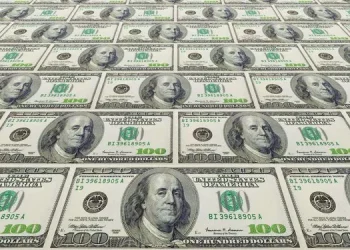The Japanese Yen (JPY) surged during the Asian session on Thursday, benefiting from a global flight to safety following U.S. President Donald Trump’s announcement of sweeping reciprocal tariffs. The announcement, which includes at least 10% tariffs on all imported goods, sparked widespread concerns that it could disrupt global trade and negatively impact the world economy, sending shockwaves through financial markets. This, coupled with a broadly weaker U.S. Dollar (USD), pushed the USD/JPY pair to a three-week low.
Market Sentiment and the BoJ’s Potential Response
Amid this heightened uncertainty, investors are now increasingly betting that the Bank of Japan (BoJ) may raise interest rates further, driven by rising inflation in Japan. This marks a significant divergence from expectations for the U.S. Federal Reserve (Fed), which is widely anticipated to resume its rate-cutting cycle due to a potential economic slowdown triggered by the tariffs. This narrowing rate differential between Japan and the U.S. could further support the appreciating trend for the lower-yielding JPY.
Global Risk Aversion and Japan’s Response
The global risk sentiment turned sharply negative following Trump’s tariffs, which weighed heavily on stock markets and drove investors toward safe-haven assets like the Japanese Yen. The Yen reached a three-week high against the USD during Thursday’s Asian session. Japan’s Prime Minister Shigeru Ishiba responded to the tariffs by stating that he would not hesitate to approach President Trump directly if needed and would continue to press for a reconsideration of the tariff measures.
As concerns over the tariffs mounted, global government bond yields dropped, with the 10-year U.S. Treasury bond yield falling to 4.0%, marking a fresh year-to-date low.
Fed Expectations and Economic Data
Traders are now anticipating that the Federal Reserve will begin cutting interest rates at the June meeting, with expectations for three 25-basis-point reductions by the end of the year. This overshadowed Wednesday’s positive U.S. ADP report, which showed that private-sector employers added 155K jobs in March, well above the expected 105K and the prior 84K.
BoJ and Economic Outlook for Japan
While fears about the impact of the U.S. tariffs on Japan’s economy have led some investors to scale back their bets on faster BoJ rate hikes, strong macroeconomic data from Japan continues to support the outlook for further tightening. Notably, strong consumer inflation figures from Tokyo released last Friday keep the door open for additional rate hikes by the BoJ, providing continued support for the Yen.
Looking Ahead
Traders are awaiting key U.S. economic data later on Thursday, including weekly Initial Jobless Claims and the ISM Services PMI, although attention is likely to remain focused on trade developments.
Technical Outlook for USD/JPY
From a technical standpoint, the USD/JPY pair remains on a downward trajectory. The recent drop below the 100-period Simple Moving Average (SMA) on the 4-hour chart, coupled with a breakdown through a multi-week-old ascending channel, suggests further bearish momentum. Additionally, bearish oscillators on the daily chart reinforce the potential for further near-term depreciation. A move towards the 147.00 level, followed by support around the 146.55-146.50 region (a multi-month low touched in March), seems increasingly likely.
On the flip side, any recovery attempt would likely face resistance near the 148.00 mark, with further upward movement potentially triggering a short-covering rally toward the 148.65-148.70 range. A decisive move higher could attract additional sellers near the 149.00 mark, capping the pair near the 149.35-149.40 region, which aligns with the 100-period SMA on the 4-hour chart. This level will be a key pivot point, with a break above potentially reversing the negative outlook and allowing for further gains.
Related Topics:
























